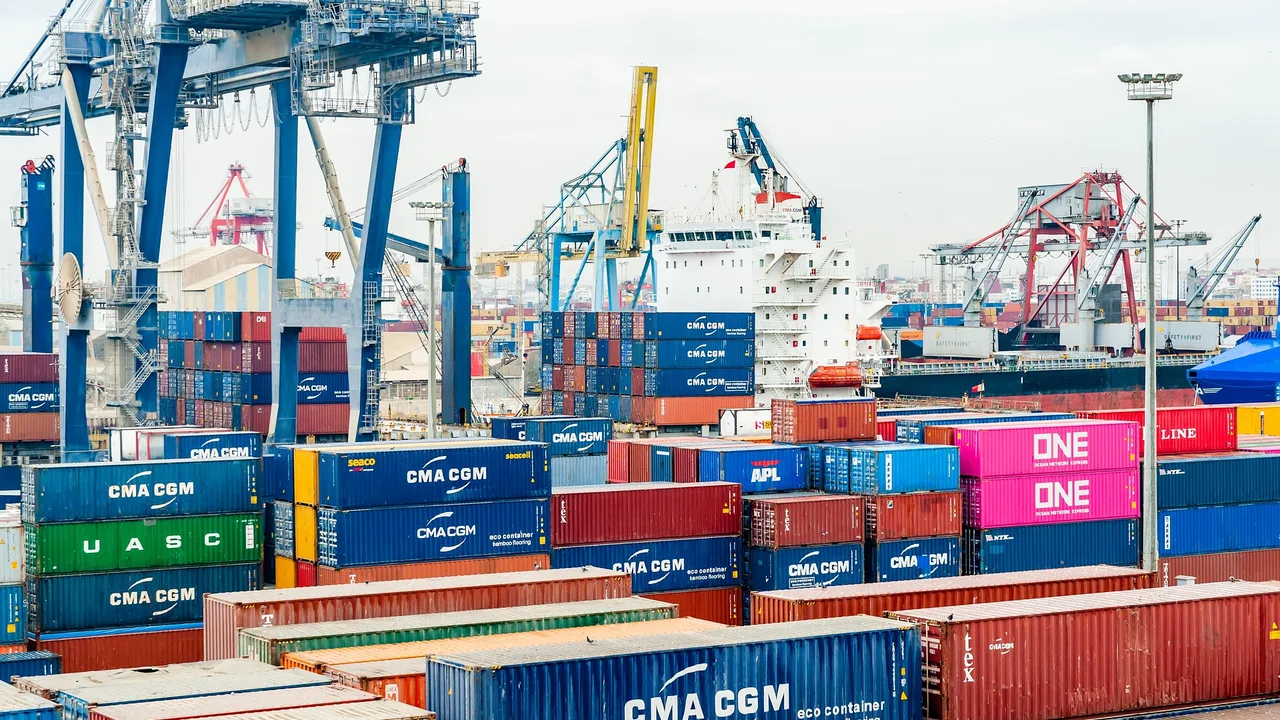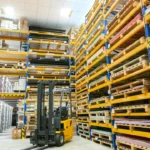Manufacturing in China has long been recognized as the driving force behind global industrial growth. Over the last four decades, China has evolved from a low-cost producer of simple goods to a complex, high-tech manufacturing ecosystem that supports the world’s largest export industry. This transformation has redefined global trade, reshaped supply chain strategies, and positioned China as an indispensable player in the modern economy.
The Evolution of Manufacturing in China
The story of manufacturing in China is one of strategic policy, industrial innovation, and global integration. During the 1980s, China’s “open-door policy” attracted foreign investors seeking affordable production bases. The establishment of special economic zones (SEZs) in Shenzhen, Zhuhai, and Xiamen provided tax incentives, streamlined logistics, and access to an abundant labor force. These early foundations allowed China to dominate textile, electronics, and machinery production by the early 2000s.
Today, China is no longer just the workshop of the world—it is a hub for advanced manufacturing technologies. Automation, robotics, and smart-factory concepts have turned Chinese industrial zones into global benchmarks for efficiency. The government’s continuous investment in digital infrastructure and export-oriented policies has reinforced the country’s reputation as a world leader in manufacturing capability and reliability.
The Scale and Structure of Chinese Manufacturing
China’s manufacturing sector is vast and diversified. It spans core industries such as steel, automotive, electronics, chemical engineering, and renewable energy equipment. Major production clusters are strategically located along the eastern seaboard, with regions like Guangdong, Jiangsu, and Zhejiang forming the backbone of national output. Each province specializes in different sectors—Guangdong in electronics and appliances, Jiangsu in textiles and machinery, and Zhejiang in light manufacturing and trade.
The strength of China’s industrial ecosystem lies in its interconnected supply chains. Thousands of component suppliers, sub-assemblers, and logistics providers operate within close proximity, enabling just-in-time production with minimal transportation delay. This vertical integration has given China unmatched speed and cost efficiency, making it the cornerstone of the global trade network.
The Backbone of Global Production
As multinational corporations expanded, they found in China the perfect combination of affordability, scalability, and technical expertise. Over time, manufacturing in China became synonymous with global production itself. From smartphones to automobiles, countless products rely on components manufactured in Chinese factories. This deep integration into worldwide supply chains means that any disruption in China reverberates across global markets.
Companies such as Apple, Tesla, and Siemens have established extensive production partnerships with Chinese suppliers, leveraging the country’s robust logistics infrastructure and precision-driven workforce. This collaboration has fueled a new era of high-value exports, where China now produces not just finished goods but also the sophisticated components that drive modern technologies. The shift from low-margin assembly to advanced fabrication has firmly positioned China at the center of international manufacturing.
Export Industry and International Connectivity
China’s export industry is supported by one of the most advanced logistics systems in the world. Its deep-water ports—Shanghai, Ningbo-Zhoushan, and Shenzhen—handle a significant portion of global container traffic. In parallel, the Belt and Road Initiative (BRI) has expanded China’s trade routes across Asia, Africa, and Europe, establishing a new framework for global commerce.
The efficiency of these logistics networks ensures that goods produced in China can reach nearly any global market within days. High-speed rail corridors, air freight hubs, and maritime routes connect hundreds of manufacturing clusters to foreign buyers. This connectivity not only sustains global trade but also encourages regional economic growth through technology transfer and joint ventures. As a result, the resilience of international supply chains remains closely tied to China’s operational stability.
Why Global Companies Depend on Manufacturing in China
Despite rising competition, the reasons companies continue to rely on manufacturing in China are multifaceted. The country offers a powerful combination of advanced infrastructure, specialized labor, and large-scale production capability. Over decades, manufacturers have built deep relationships with local suppliers, ensuring a consistent flow of materials and components even during market volatility.
Economies of scale are another decisive advantage. China’s massive domestic market allows factories to operate at high capacity, reducing per-unit costs. In addition, extensive research and development investment has propelled China toward high-tech manufacturing—ranging from semiconductors and electric vehicles to renewable-energy components. These innovations keep the nation ahead in efficiency and product quality, strengthening its global competitiveness.
Comparison with Emerging Competitors
In recent years, countries such as Vietnam, India, and Mexico have sought to attract foreign manufacturers with lower labor costs and new trade agreements. While these nations offer appealing alternatives, replicating China’s established supply-chain network remains a significant challenge. China’s production infrastructure—supported by world-class logistics, industrial parks, and skilled technicians—continues to outpace most developing markets.
Moreover, the Chinese government’s long-term focus on export industry development ensures stable policies, tax benefits, and innovation grants. Emerging economies still lack this level of coordination between policy, infrastructure, and industrial capability. Therefore, even as companies diversify, China’s dominance in global manufacturing is expected to persist for decades to come.
Rising Costs and Environmental Pressure
While manufacturing in China remains strong, it is not without challenges. Labor costs have increased significantly as living standards rise, narrowing the gap with neighboring countries. Environmental regulations have also tightened, pushing factories to adopt cleaner technologies and energy-efficient processes. Although these adjustments raise short-term costs, they are transforming China into a hub for sustainable and smart manufacturing practices.
Factories are increasingly automating repetitive tasks using robotics and artificial intelligence. Smart sensors monitor energy consumption and emissions, ensuring compliance with environmental goals. These advances align with China’s long-term vision to reduce its carbon footprint while maintaining its leadership in the global trade ecosystem.

Supply Chain Resilience in the Post-Pandemic Era
The COVID-19 pandemic exposed vulnerabilities in global logistics, yet it also underscored the resilience of manufacturing in China. Despite temporary factory shutdowns and shipping bottlenecks, production in China rebounded faster than most other economies. Its ability to adapt quickly—through automation, localized sourcing, and efficient health protocols—highlighted why the world continues to rely on Chinese manufacturing capacity.
In response to global uncertainty, many companies began adopting a “China +1” strategy, diversifying their supply chains while retaining a strong manufacturing base in China. This approach reflects the pragmatic recognition that while diversification is necessary, completely replacing China’s mature export industry is nearly impossible. The nation’s unparalleled ecosystem of suppliers, ports, and logistics services remains a critical backbone of global trade.
Digital Transformation for Greater Efficiency
One of the most significant shifts in manufacturing in China has been the embrace of digital technologies. Factories are now integrating AI-driven predictive maintenance, cloud-based production monitoring, and blockchain-powered traceability. These tools improve transparency and efficiency while reducing waste and downtime. The rise of “smart factories” ensures consistent quality control, even across complex, multi-tiered supply networks.
In addition, digital twin technology allows engineers to simulate entire production processes before implementation, minimizing risk and optimizing design. This level of precision and foresight is setting new global standards for manufacturing productivity. As a result, China’s transition from mass production to intelligent production is shaping the next generation of global supply chain management.
Technology and Sustainability in Modern Manufacturing
China’s long-term industrial vision prioritizes innovation, sustainability, and global competitiveness. Under initiatives like “Made in China 2025,” the government has pushed for advancements in robotics, green manufacturing, and renewable energy integration. Factories are adopting cleaner technologies and reducing dependence on coal-powered operations. This dual pursuit of innovation and sustainability ensures that manufacturing in China remains future-ready.
Many large corporations are now aligning with global environmental standards, such as ISO 14001 certification, and investing in renewable energy to power their plants. The transition to low-carbon production not only improves efficiency but also enhances China’s reputation in international markets increasingly focused on sustainability. According to the World Bank, sustainable manufacturing practices are becoming key drivers of export competitiveness in emerging economies.
Automation and Workforce Transformation
The evolution of manufacturing in China also involves redefining its workforce. Automation is reducing the demand for low-skilled labor while increasing the need for highly trained technicians and engineers. Vocational programs and industry partnerships are expanding to bridge this skills gap, ensuring that workers can operate and maintain advanced machinery.
This transformation reflects a broader global trend: human expertise is shifting from manual labor to system management and innovation. By empowering its workforce with digital skills, China strengthens its capacity for sustainable industrial growth and reinforces its leadership in the global manufacturing arena.
China’s Role in Global Trade and Export Strategy
China’s influence in global trade extends far beyond manufacturing output. It shapes international pricing, supply stability, and product innovation. Chinese manufacturers are increasingly moving up the value chain, exporting not only finished goods but also industrial technologies, automation systems, and production know-how.
The government’s Belt and Road Initiative continues to expand trade connectivity, creating infrastructure projects that enhance logistics between Asia, Europe, and Africa. This network supports the export industry while promoting shared development with partner nations. The result is a more interconnected and efficient global economy where Chinese manufacturing remains an integral force.
Balancing Global Dependence and Cooperation
While some countries seek to reduce their reliance on Chinese imports, global industries recognize that true economic efficiency lies in cooperation rather than isolation. Supply chains built over decades cannot be easily replicated elsewhere. As such, collaborative frameworks between China and other industrial powers are emerging—focusing on fair trade, technology exchange, and sustainable production.
These partnerships help ensure that manufacturing in China remains aligned with global standards while fostering innovation across borders. As industries continue to evolve, mutual dependence among nations will remain a defining feature of 21st-century economic systems.
Future Outlook: The Next Decade of Manufacturing in China
Looking forward, China’s manufacturing sector is expected to enter a new era of transformation. Automation, digitalization, and sustainability will continue to drive innovation across industries. High-value production—such as semiconductors, electric vehicles, and advanced materials—will dominate exports, replacing traditional low-cost goods as the cornerstone of economic growth.
Global manufacturers will maintain a strong presence in China due to its efficiency, policy consistency, and advanced supply-chain infrastructure. The nation’s growing investment in renewable energy and AI integration will further solidify its leadership in global manufacturing systems. This shift not only supports global trade but also accelerates the transition toward a more sustainable and interconnected industrial future.
Conclusion
Manufacturing in China remains a fundamental pillar of global economic stability. Its vast industrial ecosystem, technological innovation, and logistics excellence make it irreplaceable in the global supply chain. Although challenges such as rising costs and geopolitical pressures exist, China’s commitment to modernization and sustainability ensures its continued dominance in the export industry.
As the world embraces a greener, more digital economy, the evolution of manufacturing in China will continue to shape how products are designed, produced, and distributed. Through collaboration, technology, and strategic foresight, China will remain at the heart of global trade for decades to come—leading the next phase of industrial development on a global scale.



